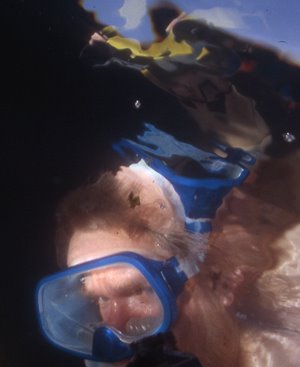Reviews Too Late: Saints and Soldiers
In the movie, the Germans kill the Americans not because they were ordered to, or because it was standard practice for this outfit, but because they overreacted to an American prisoner's attempt to escape. The massacre is shown to be the Americans' fault, just like Bill O'Reilly says.
Lord knows we can't have a World War II movie that shows the SS as bad people. We might offend the Nazis!
After the massacre, four escaped soldiers meet up in the woods and decide to make a heroic march 20 miles across country to the American lines, thus duplicating the feeble-brained decision of soldiers in another dimwitted war film, Battle of the Bulge, in which survivors of the Malmedy massacre make it all the way to Bastogne, 32 miles away as the crow flies.
(In fact, the town of Malmedy itself was still in American hands, and real-life survivors had a walk of only a few kilometers.)
Of the three survivors, one is a Dim Country Boy, one a Tough Sergeant, and one a Jewish Atheist from Brooklyn, the latter encompassing in one person no less than three of the necessary categories for members of a rifle squad according to Hollywood rules.
The fourth is more interesting: he's a shellshocked Mormon, prone to visions of dead civilians he's accidentally killed, but an exceedingly deadly fighter when he's in his right mind. He and the Sarge are both paratroopers. In real life, the airborne hadn't entered the battle when the action of the film starts, so the film comes up with an unlikely reason for their presence. Since they're not actually jumping out of aircraft at any point in this film, the necessity of their being paratroopers escaped me.
The unit is soon joined by a shot-down British aviator, carrying a roll of film that contains a Vital Secret that must be got to the allies as soon as possible. This is so implausible that the screenwriters never explain what the Vital Secret actually is. (Possibly a closeup of the swastika on Jochim Peiper's underpants.)
Most of the film consists of the cast members trudging through the snow while engaging in clumsy dialog meant to reveal character. (The British flier actually asks the other characters to each tell him a secret, which--- we have already established that they're all idiots--- they do.) The Jewish Atheist and the Mormon debate the existence and the benevolence of God. The debate is never resolved, but the action of the film tends to tilt us toward the negative.
God save us from tedious action films! Many scenes of shivering GIs trudging through the snow while engaged in pointless dialog turns out not to be your guarantee of thrills and suspense.
When we finally get to the action, it's not bad. The film made excellent use of a bunch of World War II re-creationists that they hauled up to the snow-covered mountains of northern Utah.
Most of the cast die heroically, stupidly, or arbitrarily, which is realistic enough. The Vital Secret is passed on to the Allies, who--- as a consequence, no doubt--- win the war.
I'm still wondering what the real-life basis for the film is. My guess is, "There was this battle, it had Germans and Americans, we'll put that in our movie."
By the way, when the British pilot falls into a river, he comes out without his mustache. I thought I'd mention that to show just how closely I view these films.
My advice is to watch Band of Brothers all over again.
Labels: review, saints and soldiers









